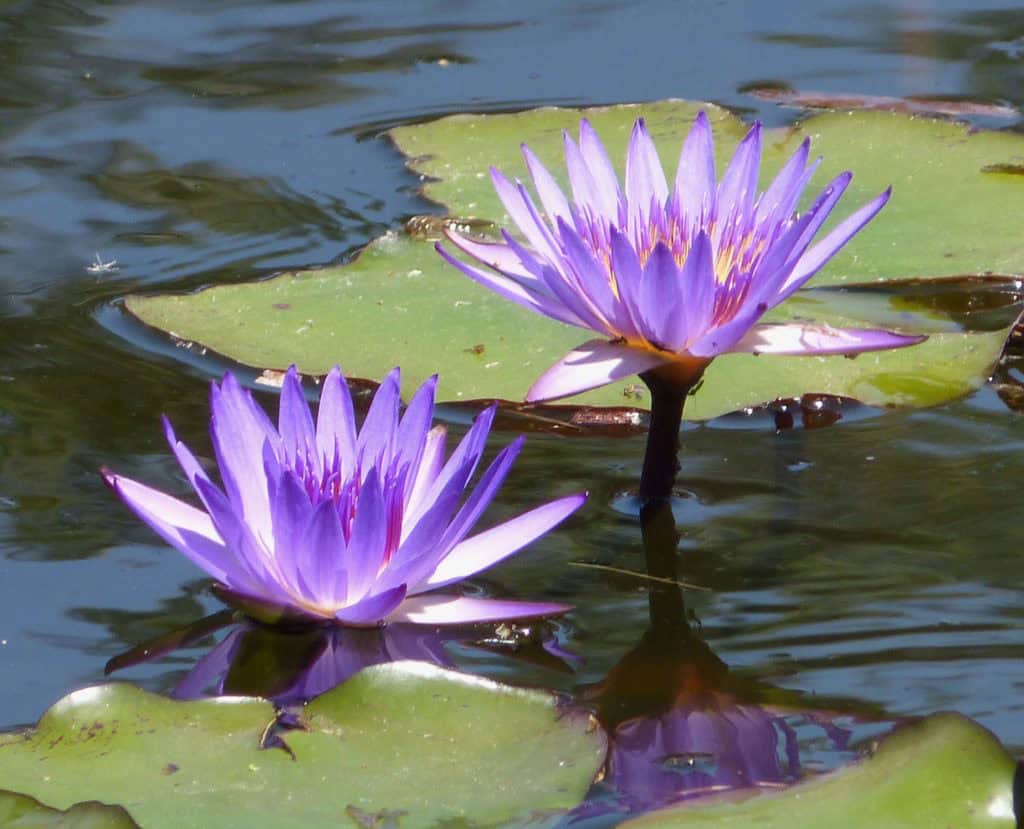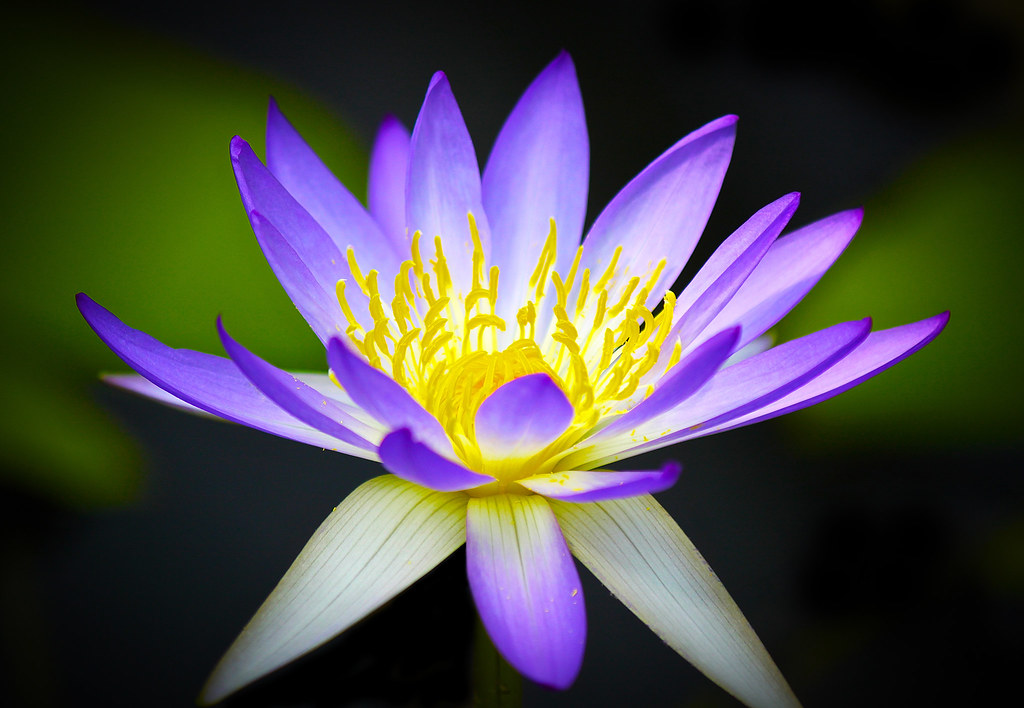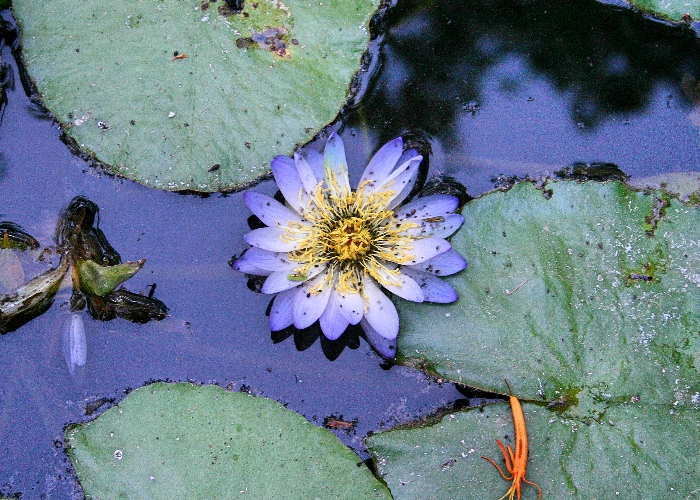Blue Waterlily
weed identification
Flowers are between 7-16cm in diameter, violet, blue or white in colour and are borne on stalks up to 30cm long. Leaves are broadly egg-shaped to circular with a split at the base and are dark green above and paler green or purplish below. The leaf margins are wavy.
Found predominantly in freshwater wetlands.
Reproduces via seed or rhizome division.
Downstream movement of water, animals.
The waterlily is a bush tucker of the Aboriginal people in northern Australia. The tuber, stem, flowers and seeds are all edible.
What does Blue Waterlily look like?
Disadvantages of Blue Waterlily
Full coverage of a pond or dam by Blue Waterlily is uncommon but can cause significant problems such as:
- Reduce oxygen diffusion
- Shades out all submerged vegetation preventing further growth and causing death
- Block drainage channels
- Causes fish and other aquatic life death
- Provides breeding ground for mosquitos
- Changes the water chemistry to favour harmful algae and bacteria
treatment
AQ200 Aquatic Herbicide + Wetting Agent – Chemical Herbicide designed to kill free floating weeds quickly. Use on mild to severe infestations.
Aquatic Weed Rake – DIY physical removal. Ideal for mild infestations, sensitive water bodies or to aid herbicide treatment.
Aquatic Harvesting – Large amphibious machine that clears the surface of floating aquatic weeds. Book this service for severe infestations or for larger water bodies.
prevention options
Aerating Fountains – Reduces the severity and likelihood of aquatic weed infestations. Use in any body of water.







